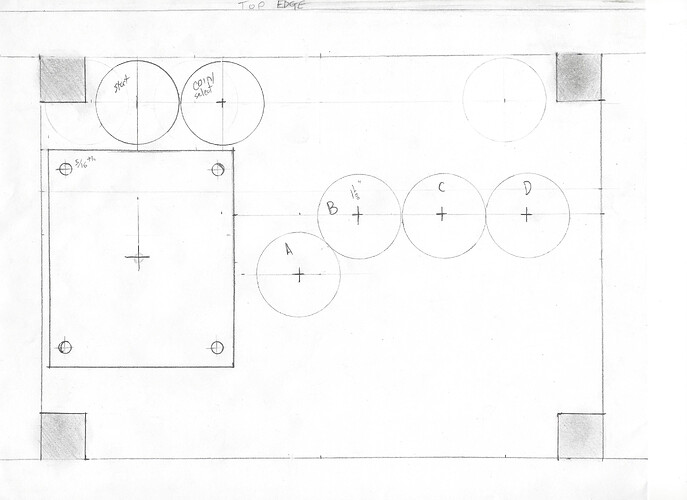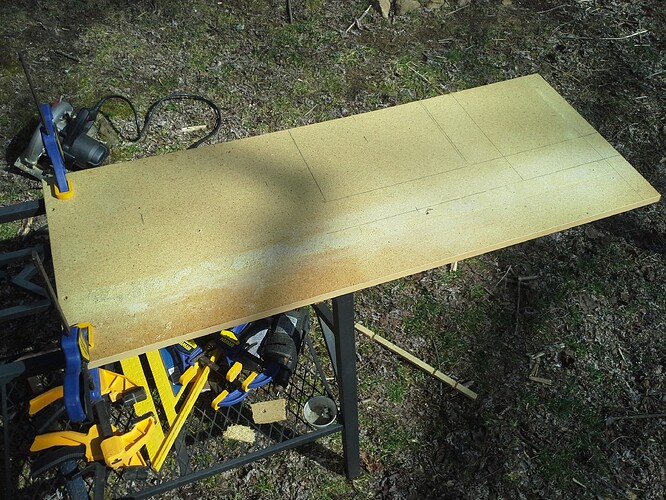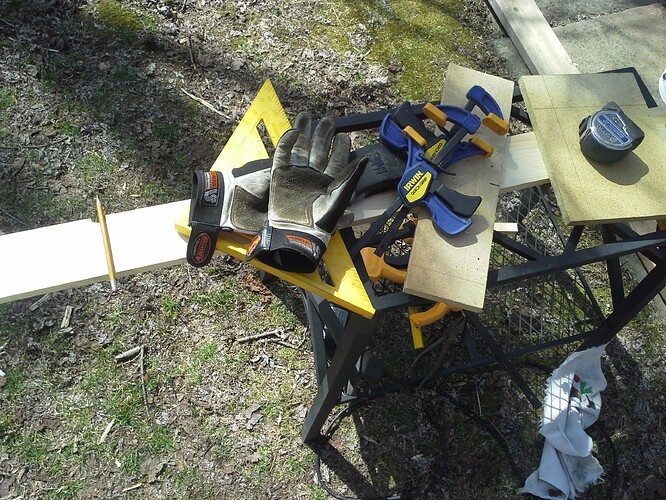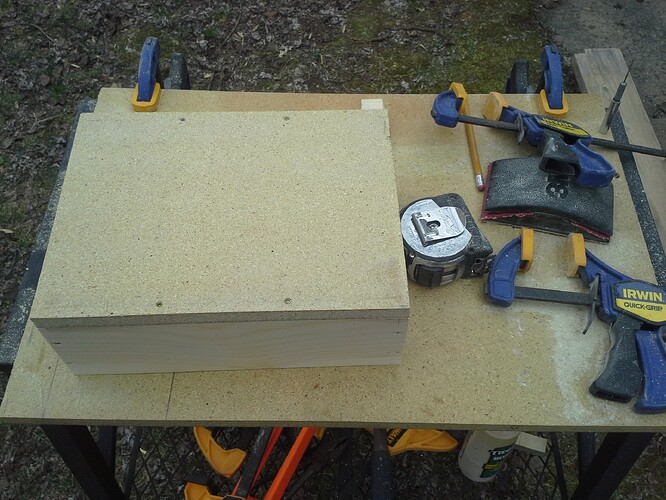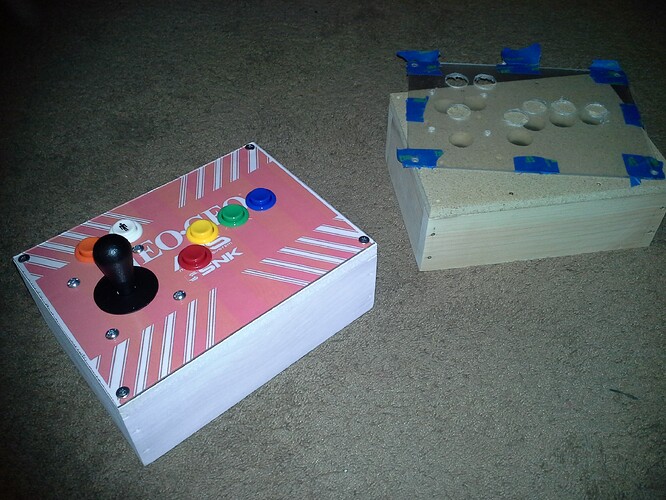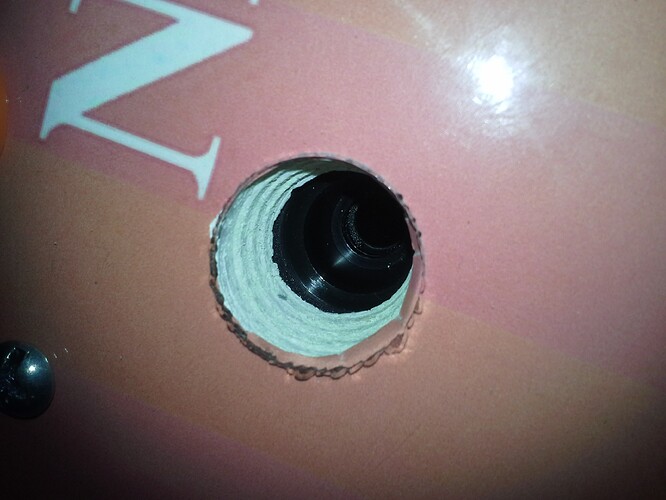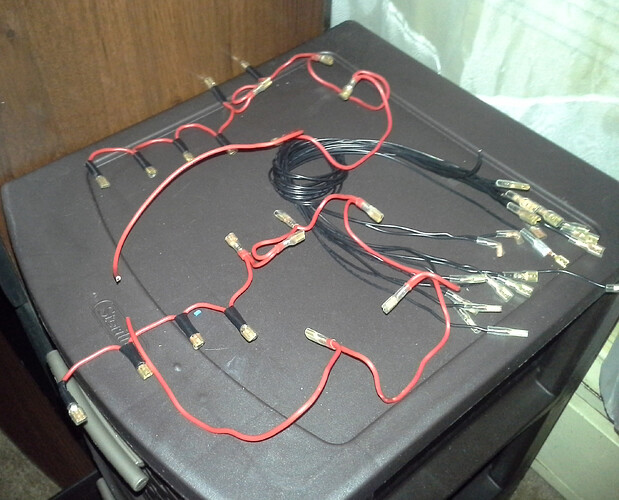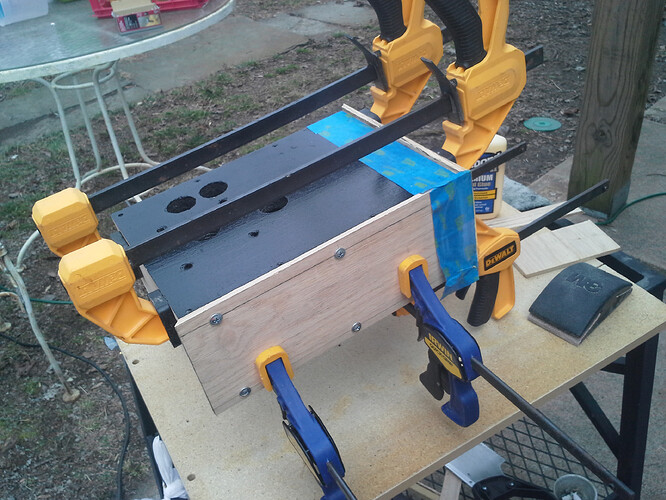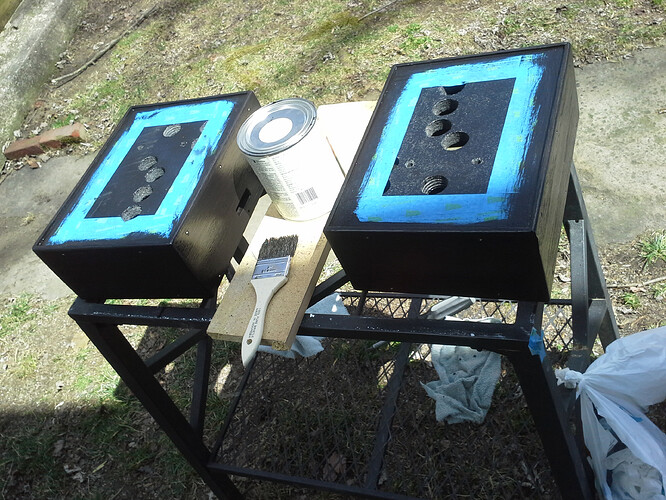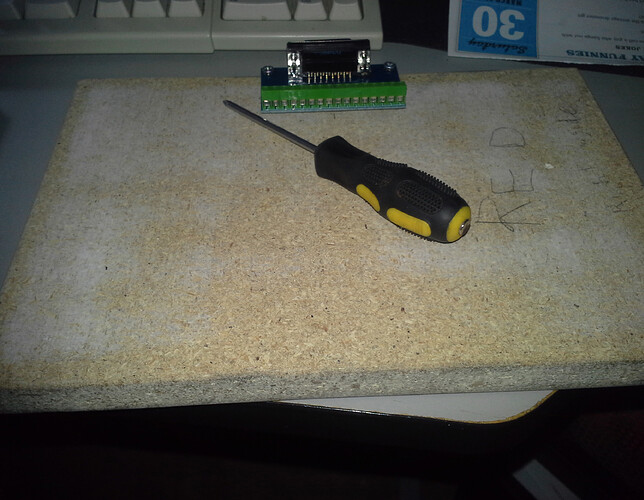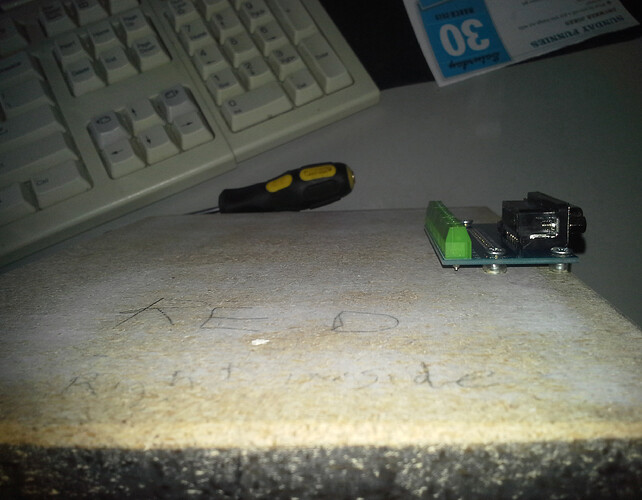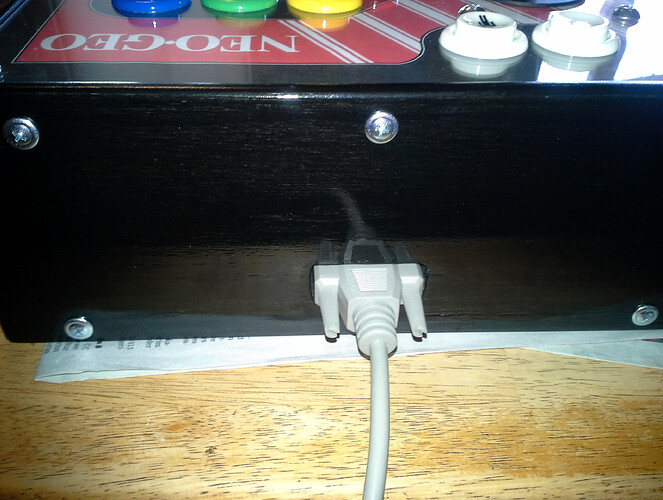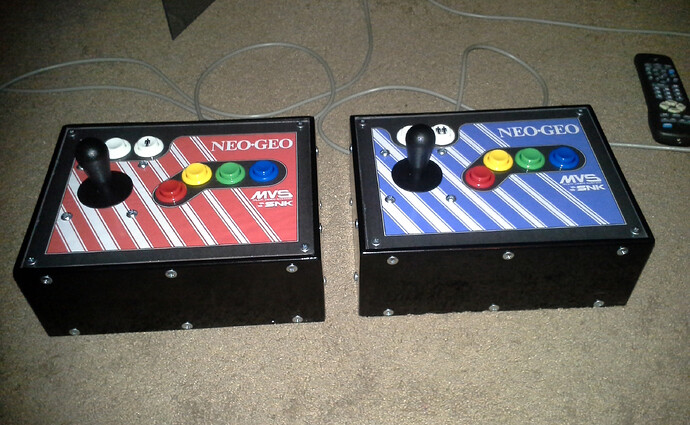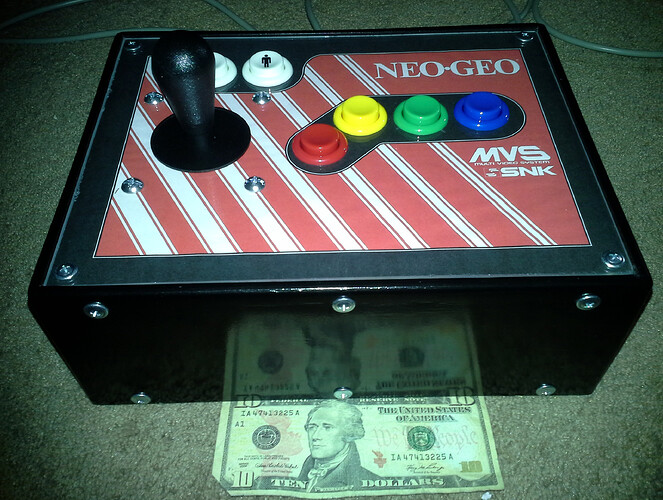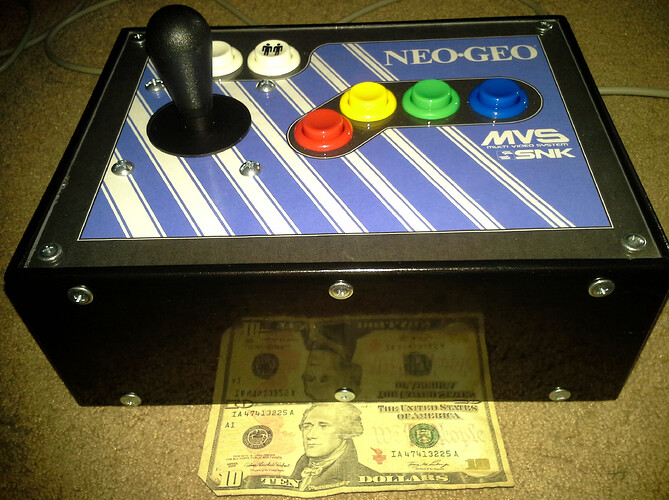I am in the process of waiting for an MVS system to “consoleize”. I have not decided yet if I will do the work myself and save some money, or just buy a pre-built. I have decided on building my own stick because the prices for a used Neo-geo stick are outrageous, and they don’t have the same look as the arcade style. Black is classy, but there is nothing as cool as the multi-color setup of Red/yellow/green/blue on a red/white background.
This is going to be a 4 button + Coin/Start with the basic color scheme of the MVS arcade. I will be doing all of the lumber work myself. I plan on a basic deep red stain for all of the wood, and will be doing the “detail” work of the black & white on the inside of the lexan top.
I have a whole pile of sticks and buttons en-route to my house, as well as Neo-Geo extension cables. I plan on using a db15 breakout box mounted inside of the stick but mounted flush with the back so that I can plug and unplug the cables when they are not in use.
I have no intent of ever using these sticks for other systems, so 6 buttons and additional electronics are not needed.
Things I am sure I don’t know:
I have not decided on dimensions yet. One potential is that when I buy the materials, I just build based around the size of lexan that is being sold. I hate cutting lexan. It never ends up being perfectly straight. I hate drilling lexan as well. I have made many things with lexan including water-blocks for cpu cooling. I may skip the plexiglass entirely. I can always put a very very thick layer of polyurethane and be content with its protective qualities.
Any suggestions from others in the Neo-geo family of DIY enthusiasts?
Edit
I broke down, and ordered a pre-modded MVS console and the 161 in 1 game cart. The cost was not cheap however reasonable for what it is. I really don’t think I could have done it much cheaper based on how I value my time.



